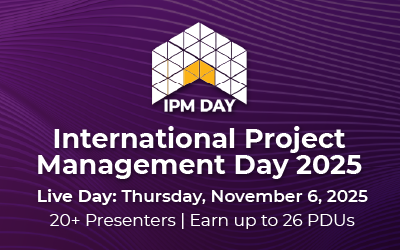By Dr. Elissa Farrow
August 7, 2024
As a futurist who has been on the road for the past week being inspired through my work: change strategizing with leaders and teams, I believe the landscape of employee engagement is set for a dramatic transformation. Part of my creative and academic process is to take a topic relevant to actioning the future and then stretching out the possible scenarios into a longer-term horizon, in this case 20 years.
With technological advancements, societal shifts, and evolving workplace dynamics, how we engage with employees in many of our service delivery contexts will be revolutionized in many industries. So, I set my mind to exploring ten futuristic strategies of engaging staff we might see emerge over the next 20 years.
As a social scientist and big lover of human contact. I will always have a personal preference for warm personalised connections. Some of these strategies I will outline in this white paper would be considered by many people leaders to be outliers. Organisational context, mission values, and operating model will mean that these strategies are aligned to purpose or not. Each organisational culture leader will have a perspective on how far we go down the Artificial Intelligence “rabbit hole”. So, let’s start rolling….
1) Enhanced Remote Work Technologies
With further advancements in remote work technologies, I believe staff engagement will be seamless regardless of physical location. These technologies could make remote work more interactive and collaborative. These are already in use as a result of the pandemic and will continue to evolve as workforce models adapt and shift. The current trend towards remote work as an option suggests this is a highly plausible area of development.
Techniques:
- Advanced telepresence robots: Enabling remote employees to have a physical presence in the office.
- Fully immersive virtual offices: Creating a virtual environment that replicates the physical office experience.
- AI-powered remote team management tools: Enhancing collaboration and productivity for remote teams.
2) AI-Powered Personalization
I believe artificial intelligence will play a crucial role in tailoring engagement strategies to individual needs and preferences. AI can analyze vast amounts of data to create personalized communication, training, and engagement plans for each employee. AI is already being used to personalize user experiences in many fields. Its application in staff engagement is a natural progression.
Techniques:
- AI-driven personalized learning and development plans: Customized training programs that adapt to an employee’s learning pace and style.
- Chatbots for instant support and feedback: AI chatbots could provide real-time assistance and gather feedback from employees.
- Predictive analytics to anticipate engagement needs: AI could predict when an employee might need support or additional engagement, allowing proactive measures.
3) Wearable Technology
Wearable devices will offer real-time insights into employee well-being and engagement levels. These devices could monitor health metrics, stress levels, and even emotional states, providing valuable data to improve workplace conditions. Wearables are already common in health and fitness. Their extension into workplace wellness is a logical next step and relatively low risk with the appropriate ethical considerations.
Techniques:
- Wearables that monitor stress and fatigue levels: Providing insights that can help managers address burnout before it happens.
- Real-time health and wellness feedback: Personalized suggestions to improve wellbeing based on data collected from wearables.
- Personalized well-being programs: Programs tailored to individual needs based on biometric data.
4) Smart Workspaces
I anticipate that workspaces will become highly adaptive, using IoT (Internet of Things) devices and AI to create environments that respond to the needs of employees in real time. These smart workspaces could improve comfort, productivity, and well-being. IoT technology is already being integrated into workplaces to create smart environments that consider also the sustainability and eco-impact of workspaces. This trend is likely to continue and expand.
Techniques:
- IoT-enabled smart desks and meeting rooms: Automatically adjusting settings based on user preferences.
- AI-driven environmental adjustments: Optimizing lighting, temperature, and noise levels to enhance comfort and productivity.
- Personalized workspace configurations: Allowing employees to customize their workspace settings.
5) Gamification and Virtual Rewards
I think gamification will become more sophisticated, integrating with VR/AR and AI to create engaging and motivating work experiences. Virtual rewards could also add an element of fun and recognition to the workplace. Gamification has been successfully implemented in various industries, including corporate training. It’s a proven concept that will become more sophisticated.
Techniques:
- Virtual Reality VR-based gamified training modules: Making learning more engaging and interactive.
- AI-driven personalized gamification strategies: Tailoring gamification elements to individual preferences.
- Virtual rewards and recognition platforms: Creating a sense of accomplishment and motivation through virtual badges, points, and other rewards.
6) Immersive Virtual and Augmented Reality (VR/AR)
Imagine a world where virtual and augmented reality technologies offer more immersive and interactive engagement experiences. Staff could participate in virtual meetings, training sessions, and collaborative projects as if they were in the same physical space, regardless of their actual location. This could eliminate geographical barriers and create a more cohesive and inclusive work environment. VR/AR is currently in use for training and remote collaboration. As the technology becomes more affordable and widespread, its use will increase.
Techniques:
- Virtual reality team-building exercises: These could simulate real-world challenges that require team collaboration to solve.
- Augmented reality-enhanced work environments: AR could overlay digital information onto the physical workspace, providing real-time data and guidance.
- VR-based training simulations: Employees could practice new skills in a risk-free virtual environment, enhancing learning and retention.
Going further into our rolling, BE READY TO SHIFT – A word on stretching your thinking and risk. While the first six technologies on my list are rapidly evolving and becoming increasingly integrated into the modern workplace today, the approaches to follow represent more speculative and experimental advancements and futures. These ideas, while promising, carry higher risks and uncertainties as they are still in the early stages of development and adoption in many contexts. So down the “rabbit hole” we go…
7) Blockchain for Transparent Feedback and Recognition
Blockchain technology could bring transparency and security to feedback and recognition systems. It could create immutable records of contributions and feedback, fostering trust and accountability within the organization. Blockchain is a proven technology in areas like finance and supply chain management. Its application in HR and staff engagement is plausible, though less common.
Techniques:
- Blockchain-based performance reviews: Secure and transparent performance evaluations that employees can trust.
- Secure and transparent reward systems: Ensuring that rewards and recognitions are fair and well-documented.
- Decentralized feedback platforms: Enabling anonymous and secure feedback from employees.
8) Holographic Communication
Holographic technology could take remote communication to a new level by making virtual interactions more lifelike and engaging. This could significantly enhance the sense of presence and connection among remote teams. Holographic technology is advancing but still in its early stages for mainstream use. It holds great promise but is less immediate.
Techniques:
- Holographic meetings and presentations: Allowing participants to feel as though they are in the same room.
- Hologram-based customer service and support: Providing a more personal touch in customer interactions.
- Virtual office environments with holographic colleagues: Creating a more immersive and interactive remote work experience.
9) Hyper-Personalized Development Programs
Leveraging big data and AI, I believe organizations will offer hyper-personalized development programs tailored to each employee’s career aspirations and learning styles. This could significantly enhance engagement and career satisfaction. While AI and big data are increasingly used for personalization, creating fully hyper-personalized development programs is more complex and less common.
Techniques:
- AI-curated learning paths: Creating customized training and development plans.
- Personalized virtual mentors and coaches: Providing guidance and support tailored to individual needs.
- Dynamic career development platforms: Adapting to changing career goals and market demands.
10) Collaborative Robots (Cobots)
Cobots could work alongside human employees, enhancing productivity and allowing staff to focus on more strategic and creative tasks. This collaboration could lead to higher efficiency and job satisfaction. Cobots are being used in manufacturing and other industries. However, their widespread use in office environments for collaboration is still emerging.
11) Neural Interfaces
Neural interface technology could allow direct interaction between the human brain and computers, enhancing communication and collaboration. This could revolutionize how we interact with technology and each other. Neural interface technology is in its infancy and involves significant ethical and practical challenges. It’s a high-potential but high-risk area.
Techniques:
- Brain-computer interface (BCI) for hands-free control of devices: Enabling more efficient and intuitive interactions with technology.
- Direct neural feedback and communication channels: Allowing for faster and more accurate communication.
- Enhanced cognitive training programs: Using neural interfaces to develop and enhance cognitive abilities.
12) Decentralized Autonomous Organizations (DAOs)
I think DAOs could enable more democratic and decentralized decision-making processes within organizations, leveraging blockchain technology. This could lead to more transparent and inclusive governance. DAOs are an emerging concept primarily within the blockchain and crypto communities. Their application in traditional business structures is highly experimental and uncertain.
Techniques:
- Blockchain-based voting systems: Allowing employees to participate in decision making processes.
- Decentralized governance structures: Reducing hierarchy and increasing transparency.
- Autonomous management platforms: Facilitating efficient and democratic organizational operations.
Building a Future Staff Engagement Approach
It is one thing to come up with futures scenarios and techniques to engage employees. The other from my perspective, is to make the futures we assess to be aligned to purpose – come to reality. Strategies always start with a vision and clear benefit measures and targets. To build a future staff engagement strategy, I think organizations need to design goals in relation to:
1) Foster a Culture of Innovation
Encourage employees to embrace new technologies and innovative ways of working. Create an environment where experimentation and learning are valued and learning loops active.
2) Focus on Well-Being
Ensure that engagement strategies support the physical and mental well-being of employees. This includes leveraging wearable technology and creating smart workspaces.
3) Enhance Transparency and Trust
Use transparent systems to build trust and accountability within the organization. Ensure that employees can contribute, question, be heard, and valued.
4) Embrace Technological Advancements
Stay aware of technological trends and consider investing in appropriate cutting-edge tools that enhance engagement. This includes adopting VR/AR, AI, and blockchain technologies.
5) Prioritize Personalization
Use data and AI to understand individual employee needs and preferences. Tailor engagement strategies to ensure they resonate with each employee.
6) Promote Continuous Learning
Offer personalized development programs and encourage lifelong learning. Equip employees with the skills and mindset they need to thrive in the future workplace.
So, in conclusion by 2040, I believe staff engagement will be transformed by new technologies and innovative approaches. From immersive VR and AI-powered personalization to blockchain transparency and neural interfaces, the future workplace will be dynamic, adaptive, and deeply engaging. By considering these more futuristic methods in employee engagement strategies, organizations can foster highly motivated, productive, and satisfied workforces, well-prepared to navigate the challenges of the future.
By anticipating and preparing for these changes, organizations can not only stay ahead of the curve but also create an engaging and fulfilling work environment that attracts and retains top talent. The future of staff engagement is bright, and the possibilities are endless.
Senior Consultant and Facilitator, International Institute of Learning





